There are so many projects you can create with essential oils and natural colorants. They work well in bath bombs, cold process soap, masks, and more. Find inspiration for your next natural project below.
Natural colorants are a great option for cold process soap. In the Natural Rainbow Cold Process Soap Tutorial, they’re used to create the classic color palette we all know and love. One of the colors used in the tutorial is annatto seed, which creates a bright orange hue. It’s also used in the 100% Coconut Oil Soap along with bergamot and litsea essential oil.
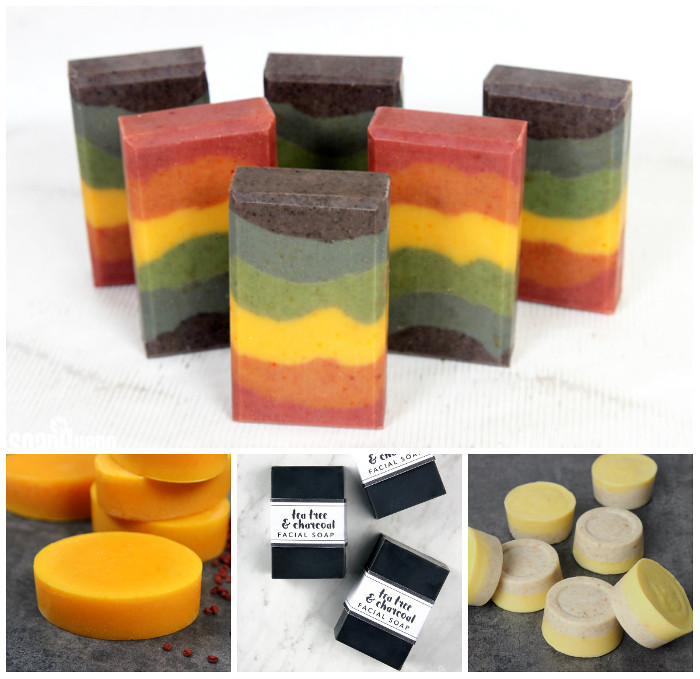 Top, clockwise: Natural Rainbow Cold Process Soap, Lard and Loofah Cold Process Soap, DIY Charcoal Facial Soap, 100% Coconut Oil and Annatto Soap
Top, clockwise: Natural Rainbow Cold Process Soap, Lard and Loofah Cold Process Soap, DIY Charcoal Facial Soap, 100% Coconut Oil and Annatto Soap
The Tea Tree Facial Soap is colored with activated charcoal, which creates a rich black shade. You can also use fruit and vegetable purees to color soap. The Lard and Loofah Cold Process Soap is made with carrot puree and poured into recycled yogurt containers to create a cute round shape.
The Natural Soap Kit for Beginners comes with three different color and scent combinations so you can choose your favorite. It also comes with ingredients, tools, and instructions to help you make soap from scratch. Then, pick up the refill kit to make more of your favorite or try a new option. See how to make the Relaxing Lavender option below.
Natural ingredients work in melt and pour soap as well. The Goat Milk Melt and Pour Bars are made with lemon peel powder and lemon essential oil for a fresh scent. Tea tree essential oil is another fresh scent you can add to your recipe. It’s used in the Pure Charcoal Melt and Pour Soap along with activated charcoal and White Melt and Pour Soap Base for maximum contrast. The Minty Clay Melt and Pour Bars also feature a contrasting color palette and poppy seeds to exfoliate the skin.
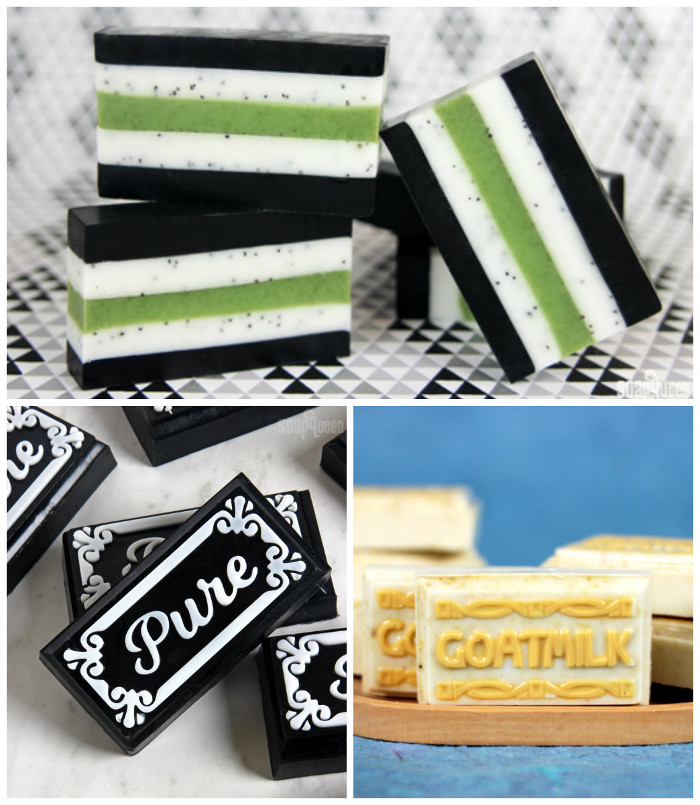 Top, clockwise: Minty Clay Melt and Pour Bars, Lemon Goat Milk Melt and Pour Bars, Pure Charcoal Melt and Pour Soap
Top, clockwise: Minty Clay Melt and Pour Bars, Lemon Goat Milk Melt and Pour Bars, Pure Charcoal Melt and Pour Soap
Biodegradable jojoba beads also exfoliate the skin. They’re used with activated charcoal in the Cleansing Scrub, which leaves your face feeling smooth and clean. Clays also leave the skin feeling fresh because they absorb oil. Various clays are used in the emulsified face masks, which can be tailored to your skin type. Learn which clay is right for your skin here.
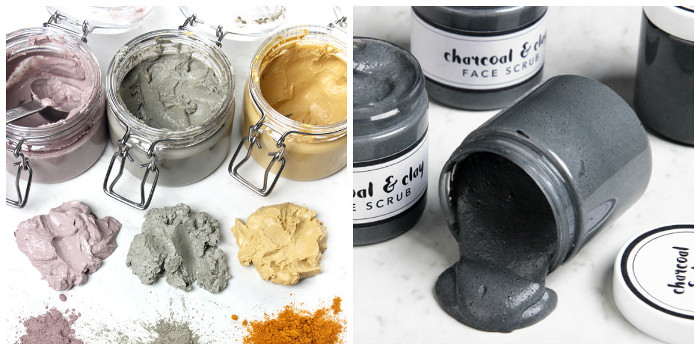 Left to right: Emulsified Clay Masks, Cleansing Charcoal Facial Scrub
Left to right: Emulsified Clay Masks, Cleansing Charcoal Facial Scrub
In bath bombs, clay is added for color and firmness. The Lavender and Clay Mondo Bath Fizzies are made with pink and purple Brazilian clay. They’re scented with lavender 40/42 essential oil and topped with lavender buds.
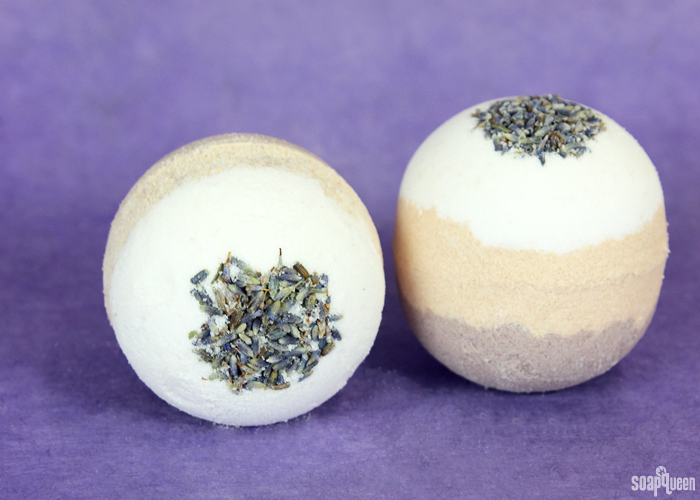
If you need to hydrate your skin, the Frankincense Essential Oil Body Balm will get the job done. It’s made with moisturizing avocado oil and kokum butter. The Chamomile and Coconut Oil Body Balm is made with olive oil to fight dry winter skin. The Lavender Lotion Bars are made with argan oil, avocado butter, and white beeswax, and scented with lavender 40/42 essential oil.
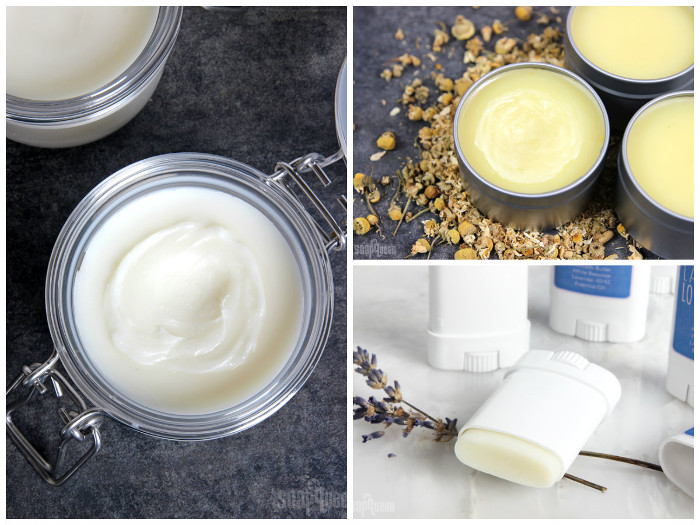 Clockwise, left: Frankincense Essential Oil Body Balm, Chamomile and Coconut Oil Body Balm, Lavender Lotion Bars
Clockwise, left: Frankincense Essential Oil Body Balm, Chamomile and Coconut Oil Body Balm, Lavender Lotion Bars
Looking for more natural project inspiration? The #SoapShare tag on Instagram is full of beautiful products made with natural ingredients. See a few of our favorites below.
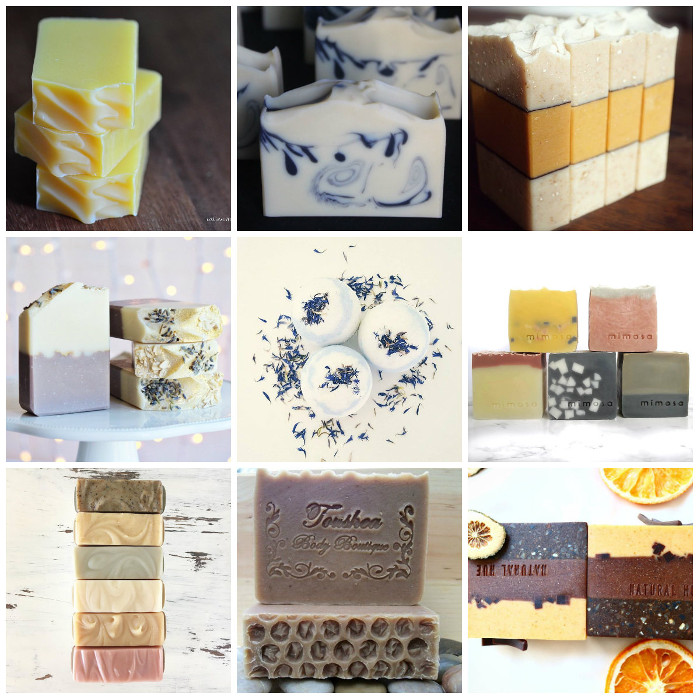 Top row, left to right: lalinn_soap, floraandpomona, creakyshed
Top row, left to right: lalinn_soap, floraandpomona, creakyshed
Middle row, left to right: latherandcompany, pixiessoapshop, mimosacostarica
Bottom row, left to right: avaandsnowgoatsoap, tousheabodyboutique, mee_hue
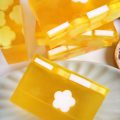
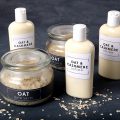
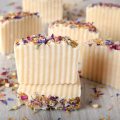
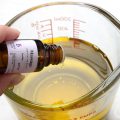
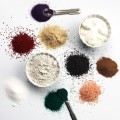
Nice webpage, full of helpful advice and ideas! But i have a question: the lavender soap in the video contains violet oxide, isn’t it synthetic (hence not natural)?
The Ultramarine Violet Oxide is a nature identical colorant. That means it’s recreated in a lab so impurities like lead are removed. We are fine using it in natural products, but if you prefer not to you can use a colorant like purple Brazilian clay: https://www.brambleberry.com/Purple-Brazilian-Clay-P5497.aspx
Learn more about working with clay here: https://www.soapqueen.com/bramble-berry-news/sunday-night-spotlight-brazilian-clay/
-Kelsey with Bramble Berry
Ultramarine Violet Oxide: https://www.brambleberry.com/Ultramarine-Violet-Oxide-Pigment-P4047.aspx
Thank you very much for your helpful reply! 🙂
Keep on the amazing work!!!
Oh I too really love the natural colors in soap. Cocoa powder for lovely light to dark brown, turmeric for yellow, orange peel powder, carrot powder, basil, sage powder and so many of them. Thanks for this post.
You’re welcome Preeti, thanks for reading.
-Kelsey with Bramble Berry
Although I haven’t used a lot of natural colors, what I have used turned out very well and I learned from soapqueen. I have used honey for an amber color. I used the annatto seed infused oil with 100% coconut and discovered how AWESOME 100% coconut oil soap is, I ALWAYS use cocoa powder for tan to brown soap and I have used carrot puree as a natural color. Thanks for all the ideas!!
Madder root for a nice cranberry color
Spirulina makes a beautiful green
The cacao powder is lovely for rich brown
I love using the natural colors and techniques I learned from watching ann Marie’s videos!
There are so many great natural options, we love using them in our recipes. Cocoa powder and annatto are some of my favorites too.
-Kelsey with Bramble Berry